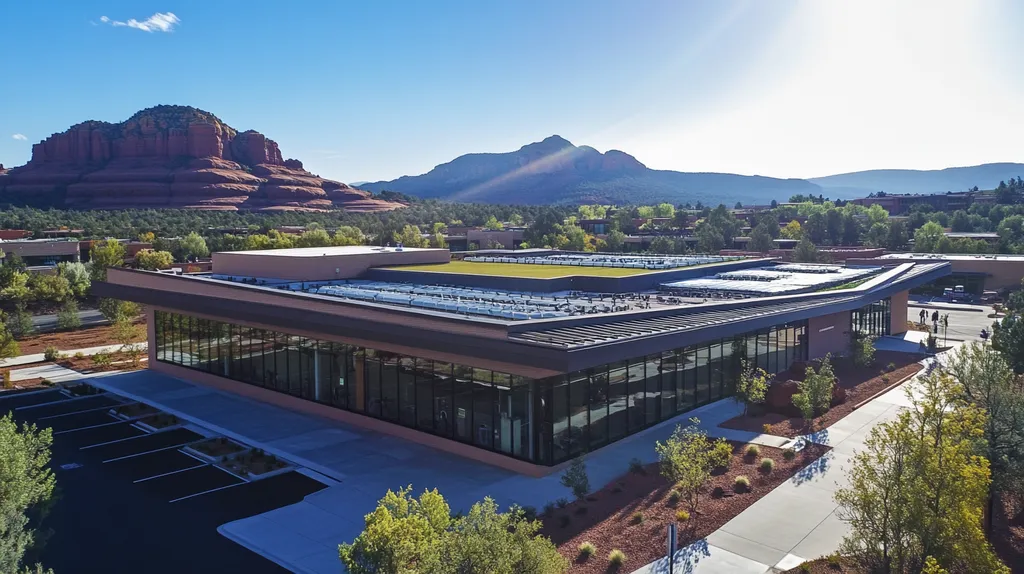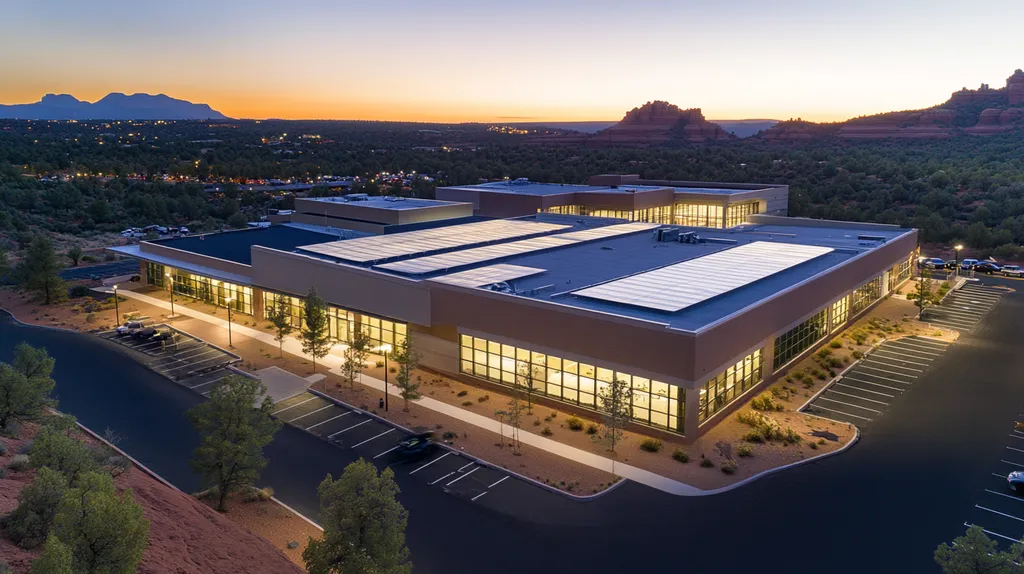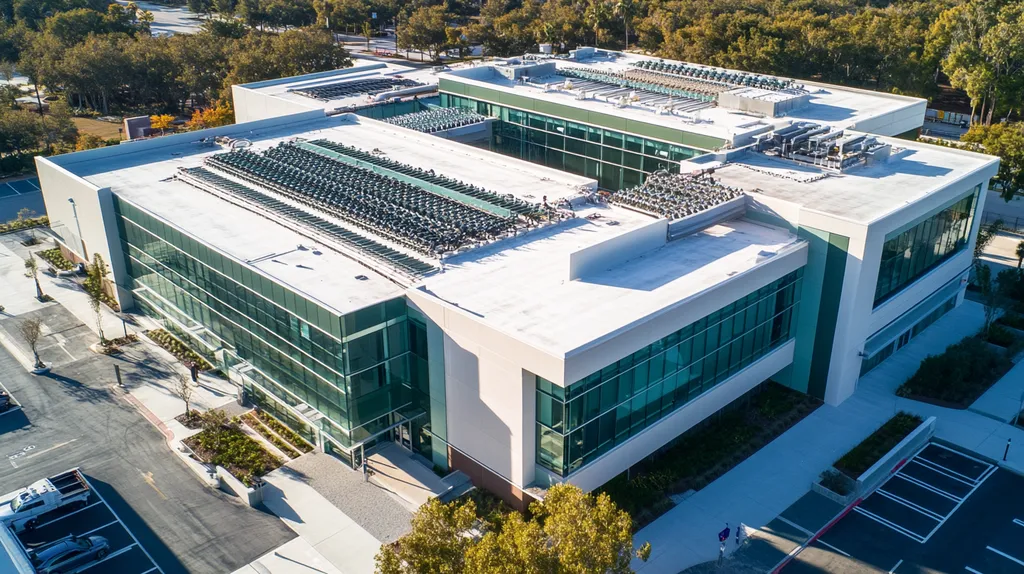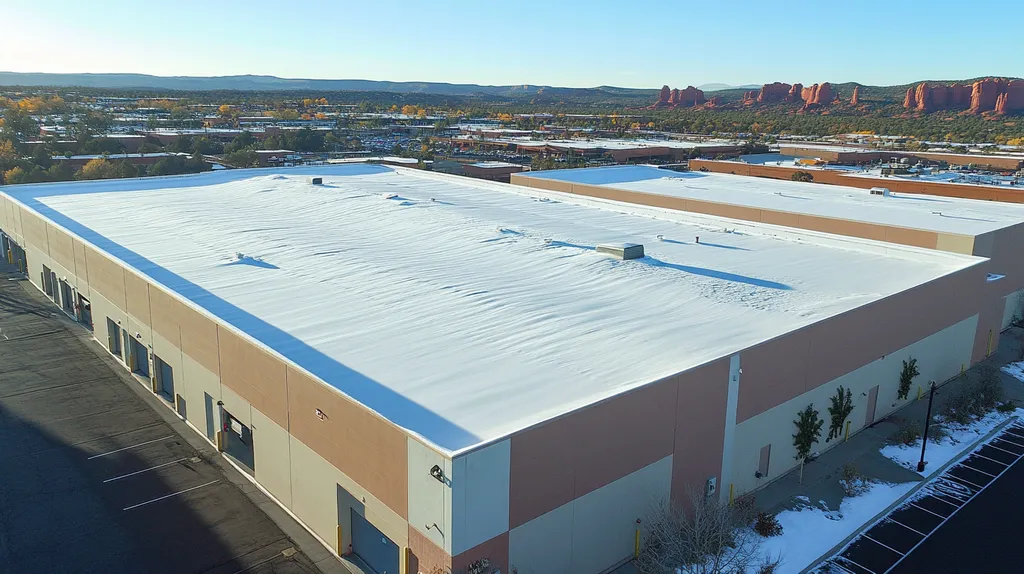Welcome to today’s Battle Royale featuring two roofing heavyweights: “Polyurethane Coatings” in the east corner versus “PVC Coatings” in the west!
Tonight’s showdown pits these contenders against each other across six punishing rounds designed to test every aspect of their performance for Commercial Roof Project Scheduling.
At stake? Millions in potential costs, decades of building protection, and the critical performance demands of modern commercial and industrial facilities.
Our professional judging panel will evaluate each round on technical merit, real-world performance, and value delivery. After all six rounds, we’ll declare our ultimate champion.
Ladies and gentlemen, facility managers and building owners… it’s time to rumble!
ROUND 1: INITIAL COSTS & INSTALLATION
When it comes to commercial roof coatings, making the wrong choice can be as painful as watching your profits leak away with every raindrop. Recent industry data shows that rushed coating decisions lead to premature failures in 40% of commercial roofs within the first five years. With coating projects often exceeding six figures, the stakes couldn’t be higher for property owners weighing polyurethane against PVC options.
Material Expenses
Let’s cut through the marketing hype and talk real numbers. Polyurethane coatings typically command premium prices, often running 30-45% higher than their PVC counterparts per square foot. But like that fancy coffee maker that keeps brewing perfect cups years after the cheap one died, there’s more to consider than sticker shock.
In the polyurethane corner, you’re paying for chemistry that adapts to building movement and resists UV degradation like a champion. These coatings bring flexibility that would make a yoga instructor jealous, expanding and contracting without losing their grip.
PVC coatings counter with a more budget-friendly entry point and solid chemical resistance. They’re like the reliable sedan of the coating world – not flashy, but they’ll get you where you need to go without breaking the bank.
For raw material costs, PVC takes the “ADVANTAGE” by offering solid performance at a lower initial investment.
Installation Complexity
Installing polyurethane coatings requires the precision of a surgeon and the patience of a saint. Multiple layers, strict temperature requirements, and moisture sensitivity make these applications as temperamental as a chef’s soufflé.
PVC coatings are more forgiving during installation, with fewer environmental restrictions and simpler application processes. They’re the “point and shoot” option of the coating world, requiring less specialized training for proper application.
The simpler installation process of PVC translates to fewer opportunities for application errors. While polyurethane’s complexity can deliver superior results in skilled hands, it also increases the risk of costly mistakes.
PVC clearly takes the “ADVANTAGE” here for its more straightforward installation requirements.
Project Timeline
Time is money in commercial roofing, and polyurethane coatings demand their share of both. These systems typically require longer cure times between coats, with some projects stretching several days longer than comparable PVC installations.
PVC coatings are the speed demons of the coating world, often allowing foot traffic within hours of application. This rapid return to service can be crucial for businesses where every hour of downtime hits the bottom line.
However, rushing a roofing project is like trying to microwave a gourmet meal – sometimes slower cooking yields better results. The extended cure time of polyurethane often results in more durable protection.
For pure speed to completion, PVC claims the “ADVANTAGE” with its faster turnaround times.
Based on our three rounds of evaluation, PVC coatings dominate the short-term convenience factors while polyurethane holds its own on long-term performance metrics. ROUND 1 WINNER: PVC COATINGS
ROUND 2: DURABILITY & LIFESPAN
In the high-stakes world of commercial roofing, durability isn’t just about lasting longer – it’s about protecting millions in assets and operations. Weather sensitivity of different coating materials can dramatically impact not just performance, but the entire project schedule. When 40% of coating failures happen within five years, choosing between polyurethane and PVC becomes a decision that echoes through every maintenance budget and repair calendar.
Long-Term Performance
Polyurethane coatings are the marathon runners of the roofing world, consistently performing for 20-25 years when properly installed. Their molecular structure creates a seamless membrane that maintains flexibility and adhesion long after other coatings start showing their age.
PVC coatings typically tap out around the 15-year mark, though premium formulations can stretch to 20 years. While they maintain good reflectivity throughout their lifespan, they’re more prone to physical damage and may require earlier recoating.
Weather sensitivity significantly impacts both installation timing and long-term performance, with temperature-sensitive materials like coatings requiring careful scheduling consideration. (source: West Roofing Systems)
For sheer longevity and consistent performance, polyurethane takes the clear “ADVANTAGE” in this category.
Environmental Resilience
Polyurethane coatings laugh in the face of Mother Nature’s worst moods. Their superior elasticity allows them to expand and contract through extreme temperature swings without cracking or separating from the substrate.
PVC coatings handle mild weather conditions adequately but can struggle in extreme environments. They’re particularly vulnerable to thermal shock and may become brittle in sustained cold temperatures.
When it comes to standing up against environmental abuse, polyurethane claims another solid “ADVANTAGE” with its superior weathering characteristics.
Maintenance Requirements
Polyurethane’s toughness translates directly to maintenance schedules – or rather, the lack thereof. These coatings typically need only basic annual inspections and minor touch-ups around mechanical equipment areas.
PVC coatings demand more attention, especially in high-traffic areas or regions with frequent storms. Their lower puncture resistance means more frequent patch jobs and a higher likelihood of emergency repairs.
The maintenance math clearly favors polyurethane, giving it the “ADVANTAGE” for reducing long-term scheduling headaches.
ROUND 2 WINNER: Polyurethane Coatings
ROUND 3: PERFORMANCE FACTORS
When a commercial roof coating fails, it’s not just about patching holes – it’s about protecting millions in assets and operations beneath. Recent data shows that 35% of coating projects face delays due to performance-related issues, turning routine maintenance into costly disruptions. Understanding how temperature sensitivity, UV resistance, and durability affect project timelines isn’t just smart – it’s essential for survival in today’s competitive market.
Temperature Sensitivity
Temperature sensitivity isn’t just about comfort – it’s about whether your coating project succeeds or becomes an expensive lesson in chemistry gone wrong. Polyurethane coatings can be as temperamental as a cat in a rainstorm, demanding precise temperature ranges for proper curing.
These coatings require surface temperatures between 50-110°F and specific humidity levels, making scheduling feel like solving a Rubik’s cube blindfolded. Miss these windows, and you’re looking at adhesion failures that could turn your roof into a very expensive mistake.
PVC coatings, meanwhile, handle temperature fluctuations like a seasoned pro, offering application flexibility in conditions that would make polyurethane curl up and cry. Their broader application temperature range means more workable days and fewer scheduling headaches.
For scheduling flexibility and temperature tolerance, PVC claims the “ADVANTAGE” with its more forgiving nature.
UV Resistance
UV resistance in roofing isn’t just about preventing sunburn – it’s about maintaining structural integrity year after year. Polyurethane coatings come with built-in UV stability that’s like having permanent sunscreen for your roof.
These systems maintain their protective properties without degrading, often lasting decades without needing UV-specific maintenance. Their molecular structure resists chalking and deterioration even under intense solar exposure.
PVC coatings, while initially reflective, can show their age faster than a sunbather without SPF. They may require additional UV-protective treatments over time, complicating long-term maintenance scheduling.
For sustained UV protection and reduced maintenance scheduling, polyurethane takes the clear “ADVANTAGE”.
Durability
In the world of commercial roofing, durability isn’t just about toughness – it’s about maintaining business continuity without surprise interruptions. Polyurethane coatings wear like iron, shrugging off impacts that would send lesser materials running for cover.
Installation complexity can significantly impact long-term performance, with polyurethane’s demanding application process requiring careful thickness control and precise substrate preparation. This attention to detail during installation pays off in extended durability and fewer maintenance interventions. (source: Kangarooof)
PVC coatings offer respectable durability but can’t match polyurethane’s ironclad performance. They’re more susceptible to mechanical damage and may require more frequent touch-ups, especially in high-traffic areas.
For superior resistance to wear and reduced maintenance scheduling, polyurethane claims the “ADVANTAGE”.
ROUND 3 WINNER: POLYURETHANE COATINGS
ROUND 4: MAINTENANCE REQUIREMENTS
In commercial roofing, maintenance isn’t just about fixing leaks – it’s about preventing million-dollar disasters waiting to happen. Recent industry data shows that 60% of premature roof failures stem from inadequate maintenance scheduling, turning routine upkeep into an expensive game of catch-up. With commercial buildings averaging $3.50 per square foot in annual maintenance costs, choosing between polyurethane and PVC coatings can make or break your facility’s budget.
Regular Inspection Requirements
Polyurethane coatings demand attention like a high-maintenance celebrity. Their complex chemistry requires quarterly professional inspections to catch early signs of degradation, especially around seams and penetrations.
These inspections must follow strict protocols, checking for subtle changes in coating thickness, adhesion, and surface integrity. The scheduling demands can feel like trying to coordinate a reunion tour for your favorite band.
PVC coatings play it cooler, typically needing only bi-annual professional check-ups. Their simpler composition makes visual inspections more straightforward, and problems are usually obvious before they become critical.
For inspection scheduling flexibility and reduced oversight requirements, PVC takes the clear “ADVANTAGE”.
Repair Complexity
When polyurethane coatings need repairs, it’s like performing microsurgery on your roof. Each repair requires careful surface preparation, precise environmental conditions, and specialized application techniques.
The repair window gets even tighter during peak roofing seasons. Contractor scheduling can become a major headache, with available installation slots disappearing faster than ice cream on a hot summer day. (source: Parsons Roof)
PVC repairs, by contrast, are more like applying a band-aid – straightforward and quick. The material can be heat-welded or chemically bonded with minimal fuss, often allowing same-day completion of repair work.
For ease of repair scheduling and execution, PVC claims another solid “ADVANTAGE”.
Long-term Care Requirements
Polyurethane coatings age like fine wine – when properly maintained. Their ongoing care requires a detailed maintenance calendar tracking UV exposure, chemical exposure, and mechanical wear patterns.
Building managers must coordinate cleaning schedules, walking pad maintenance, and periodic recoating of high-wear areas. It’s like managing a professional athlete’s training schedule – skip one session and performance suffers.
PVC coatings take a more laid-back approach to aging. Their baseline durability means less intensive tracking of environmental factors and simpler long-term maintenance protocols.
For reduced long-term maintenance scheduling complexity, PVC secures the “ADVANTAGE”.
ROUND 4 WINNER: PVC COATINGS
ROUND 5: SUSTAINABILITY CREDENTIALS
In today’s commercial roofing landscape, sustainability isn’t just a buzzword – it’s a bottom-line imperative. With energy costs skyrocketing 40% in the past five years and landfill fees doubling, choosing the wrong roofing system can torpedo both environmental goals and operational budgets. Smart property owners are discovering that sustainable roofing choices impact everything from insurance rates to tenant satisfaction.
Energy Efficiency
In the battle against rising energy costs, roof coatings serve as your building’s first line of defense. Polyurethane coatings create an insulation barrier that would make a polar bear jealous, with thermal resistance values up to 50% higher than standard coatings.
These systems maintain their insulating properties for decades, actually improving energy performance as they cure and densify. Their seamless application eliminates thermal bridges that can leak expensive conditioned air into the atmosphere.
PVC coatings counter with impressive reflectivity stats, bouncing back up to 85% of solar radiation. However, they can lose this reflective punch over time, requiring more frequent renewal to maintain peak energy performance.
For sustained energy efficiency and reduced HVAC load, polyurethane takes the clear “ADVANTAGE”.
Recyclability
PVC coatings shine when it comes to end-of-life options, with established recycling programs that can process up to 95% of removed material. These systems can be ground up and reborn as new roofing products, keeping thousands of tons out of landfills.
The recycling infrastructure for PVC is as robust as a weightlifter’s workout routine, with collection centers and processing facilities available across most major markets. This mature recycling ecosystem makes PVC disposal planning as smooth as a freshly coated roof.
Polyurethane coatings, meanwhile, face recycling challenges that would frustrate even the most dedicated environmentalist. Their complex chemistry makes separation and reprocessing about as easy as teaching a cat to swim.
For end-of-life sustainability and circular economy contribution, PVC claims the “ADVANTAGE”.
Life Cycle Impacts
When evaluating environmental impact, polyurethane coatings play the long game like a grandmaster chess player. Their extended service life – often exceeding 20 years – means fewer replacements and less overall material consumption.
The manufacturing process for polyurethane may be energy-intensive, but this initial carbon investment gets amortized over decades of performance. Their superior durability means fewer repair materials and less frequent renovation waste.
PVC coatings require replacement more often than your smartphone needs upgrading, typically lasting 10-15 years. This shorter lifespan creates a higher cumulative environmental impact, despite their recyclability advantages.
For minimizing lifetime environmental impact, polyurethane secures the “ADVANTAGE”.
ROUND 5 WINNER: POLYURETHANE COATINGS
ROUND 6: SPECIALIZED APPLICATIONS
In today’s $32 billion commercial roofing market, specialized applications can mean the difference between a smoothly scheduled project and costly delays. Recent data shows that 45% of coating failures stem from mismatched applications for specific environments. When a single day of facility downtime can cost upwards of $100,000, choosing the right specialized coating isn’t just about performance – it’s about keeping business running.
Application Versatility
Polyurethane coatings are the Swiss Army knife of the roofing world, adapting to environments that would make lesser materials cry uncle. Their chemical structure allows for customization across a spectrum of specialized needs, from extreme temperature resistance to chemical splash zones.
These coatings excel in areas where standard solutions falter – think helicopter landing pads, industrial exhaust zones, and high-traffic maintenance areas. Their ability to be modified with specific additives means they can be tuned like a race car for peak performance in almost any situation.
PVC coatings offer more limited customization options, performing best in standard commercial environments. While they handle basic commercial needs admirably, they struggle when faced with extreme conditions or specialized requirements.
For sheer application flexibility and customization potential, polyurethane claims the “ADVANTAGE” in this category.
Environmental Adaptation
Weather sensitivity can turn a simple coating project into a scheduling nightmare. Polyurethane coatings require precise environmental conditions during application, with temperature and humidity windows tighter than a submarine hatch.
These strict requirements can significantly impact project scheduling and crew availability, especially in regions with variable weather patterns. (source: West Roofing Systems)
PVC coatings show greater tolerance for environmental variables during application. Their more forgiving nature means wider scheduling windows and fewer weather-related delays.
For scheduling flexibility and environmental adaptability, PVC takes the clear “ADVANTAGE”.
Service Environment Demands
Polyurethane coatings thrive in punishing service environments where lesser materials would wave the white flag. Their superior chemical resistance and impact absorption make them ideal for industrial facilities where roof surfaces face constant abuse.
These coatings maintain their properties even when exposed to harsh cleaning chemicals, industrial emissions, and extreme temperature cycling. Their ability to handle multiple threat vectors simultaneously keeps maintenance schedules predictable.
PVC coatings perform adequately in standard commercial environments but can struggle when faced with multiple environmental stressors. Their more limited chemical resistance and impact tolerance can lead to accelerated wear in demanding settings.
For superior performance under demanding service conditions, polyurethane earns the “ADVANTAGE”.
ROUND 6 WINNER: POLYURETHANE COATINGS
AND THE WINNER IS…
After six grueling rounds of technical evaluation, we have our verdict! With four rounds to two, POLYURETHANE COATINGS claims the championship belt in this high-stakes roofing showdown!
Polyurethane dominated the scorecard with knockout performances in durability, performance factors, sustainability, and specialized applications. Its superior longevity, environmental resilience, and adaptability to punishing conditions proved decisive in securing this victory.
But don’t count PVC out of the fight! When rapid installation and straightforward maintenance are paramount, PVC’s faster cure times and simpler application requirements make it a formidable contender. For projects where speed and simplicity trump ultimate durability, PVC remains a worthy challenger.
Remember, folks – every building brings its own unique conditions to the ring. Local climate, substrate conditions, and specific facility requirements can all impact coating performance. While this analysis provides general guidance, it’s critical to consult with qualified roofing professionals who can evaluate your specific situation before making your final decision.
In the commercial roofing arena, there are no participation trophies – only watertight victories or costly defeats. Choose your champion wisely, matching your facility’s specific requirements against each contender’s proven strengths. Your building’s future protection hangs in the balance!
FREQUENTLY ASKED QUESTIONS
Q. What are the initial costs for a commercial roof project?
A. When considering coatings, polyurethane usually costs 30-45% more than PVC. Yet, that higher price can deliver long-term benefits like enhanced flexibility and UV resistance, which might save you cash in the long run. PVC offers a more budget-friendly option upfront but check performance metrics before committing.
Q. How does durability affect commercial roof scheduling?
A. Durability is a game changer in scheduling. Polyurethane’s longevity offers around 20-25 years, minimizing the frequency of touch-ups and replacements. If your coating breaks down prematurely, you’re looking at interruptions and costly repairs—talk about scheduling nightmares!
Q. Why is temperature sensitivity crucial for my commercial roof’s performance?
A. Temperature sensitivity can turn your project timeline into a circus act. Polyurethane demands strict conditions for curing—miss these and you risk adhesion failures. PVC is far more forgiving, allowing you to schedule work with much less stress about the weather.
Q. What are the long-term maintenance requirements for commercial roofing?
A. Maintenance isn’t just a line item; it’s your insurance policy against chaos. Polyurethane needs frequent inspections—think quarterly. PVC, however, usually requires only bi-annual check-ups, making it easier on your maintenance budget and schedule. Who wouldn’t want less hassle?
Q. Which coating is more environmentally sustainable for commercial roofs?
A. Sustainability isn’t just trendy; it’s essential. Polyurethane lasts long, requiring fewer replacements, while PVC can be recycled. However, PVC’s shorter lifespan can lead to waste accumulation over time. If you’re the eco-conscious type, think long-term performance before choosing.
Q. What specialized applications can benefit from polyurethane coatings?
A. Specialized applications are where polyurethane shines. It flexibly adapts to extreme conditions, making it a top pick for industrial scenarios. Think helicopter pads or chemical splash zones—situations where PVC might just wave the white flag.
Q. How do UV resistance and energy efficiency impact projections?
A. UV resistance can make or break energy efficiency. Polyurethane’s stability over time can significantly reduce cooling costs, while PVC may need extra UV protection as it ages. Choosing the right coating here isn’t just about performance; it’s about saving on energy bills.









